IN THE FACE of serious impacts of climate change, leaders of over 130 nations have come together in Paris, France for the 21st Conference of Parties (COP21) Climate Talks. But according to civil society organizations, much of what is happening inside the COP, along with the repression of protests in the streets of Paris, is rather alarming.
The COP is the annual convention of world leaders that aims to come up with solutions to the world’s worsening climate crisis by creating a legally binding universal agreement from all of the world’s nations. It is also the official meeting of all states party to the Kyoto Protocol. This year’s COP is held at Le Bourget, Paris, France from November 30 to December 11.
The Kyoto Protocol is a plan by the United Nations to fight climate change by having participating countries reduce the greenhouse gases (GHGs) by signing a law that legally binds them to this goal. It was created in 1997 and officially put into full-force in 2005. However, three of the world’s biggest polluters namely China, India, and the US, have refused to ratify the Kyoto Protocol, or any treaty that makes them legally commit to reducing carbon emissions.
The Doha Amendment, which seeks to extend it to 2020, has not yet been ratified by enough nations and, as such, has yet to be put into effect.
Paris and Beyond
Almost a million people from 175 countries have participated in People’s Climate Marches to demand meaningful and productive outcomes from the COP21– one that is durable, just, and binding, that can replace the Kyoto Protocol and take effect by 2020.
Some would expect the marches and protests to be loudest in Paris; however, all of this is happening with France in a state of emergency. The Hollande government justified this by invoking the November 13 that killed at least 130 people. Civil society groups that are currently in Paris to protest the COP21, such as Manila-based Ibon International, report that street demonstrations are currently banned in Paris. Anybody caught participating in an “illegal” demonstration may be fined or arrested.
On November 29, around 20,000 pairs of shoes were laid in the city’s Place de la Republique instead, as a symbol for marchers not allowed to exercise their right to peaceful assembly. Later, an estimated 10,000 people formed a human chain along the sidewalk, which spanned several kilometers.
However, that afternoon the riot police came down on the several hundred people in the Republique, which resulted in the arrest of around 200 protesters.
Meanwhile, inside Le Bourget
The climate deal this year takes a rather different approach: it calls on each the governments to say how much and how willing they are to take steps to reduce emissions, provide finance, and adapt to the impacts of climate change.
According to Ibon’s report, negotiations in the COP21 meetings have been taking place in smaller groups and are often closed to civil society and other observers. The hurried process and lack of transparency could further put in question the legitimacy of any outcome, the report said.
It added that contentious issues still surround the negotiations. For instance, arriving at a long-term goal remains controversial, i.e. whether global temperature increase should be put at 1.5 or well below 2 degrees; as well as how to translate this temperature goal into actual global emissions reductions.
According to Ibon, probably the most disputed issue is financing climate action, especially with the questionable proposal from the United States and its allies that developing countries should contribute equally to climate finance. This disregards the principle of ‘common but differentiated responsibility and respective capacities’ of the UN Framework Convention.
Civil society groups stressed that since the Kyoto Protocol was adopted and enforced ten years ago, global carbon emissions did not lessen. But while climate change is a global problem, developed countries should recognize that they are legally bound to undertake emissions reductions, provide finance and capacity building to developing countries. Making the US and other developed countries take account, the groups say, should be the focus of the current COP meetings. Forging a just agreement at the COP21 conclusion is an initial step, according to civil society.
Meanwhile, environment group Kalikasan cited the 2014 report of the Intergovernmental Panel on Climate Change (IPCC) stating that the climate crisis has reached dangerous levels, with massive and fast-rising emissions of GHGs from industrialized countries. As of mid-2015, global GHGs have reached a new high of 402 parts per million in the atmosphere. Kalikasan added that the world’s climate is shifting catastrophically and the planet is already feeling its tremendous effects.
What Aquino did not report
There are currently 47 committed and indicative coal power projects in our country under the Aquino administration. Should they all push through by 2025 the Philippines will have to suffer 60 additional metric tons of carbon dioxide emissions. All of this adds to the already increasing emissions caused by the worsening pollution in our country.
It would make sense for the President to report all this at COP21, except that he didn’t. According to Kalikasan, Aquino’s three-minute speech at Le Bourget “failed to capture the harsh realities of the burgeoning climate crisis in the Philippines and the world at large.”
The environment group criticized Pres. Aquino’s refusal to make the big emitters take accountability, instead opting to stay “happy with begging for climate financing crumbs,” with our country’s commitment to cutting carbon emissions dependent on whether or not we get support from the international community. Among others, Pres. Aquino also cited Typhoon Haiyan, but not the current dismal state the survivors still are in, the group noted. He also talked about cracking down on illegal loggers, but failed to mention that “legal logging” has caused the encroachment on old-growth forests, farmland, and ancestral lands of indigenous people.
For research group Ibon, while the support for climate adaptation and mitigation from developed nations is crucial, the Aquino administration should realize that its climate policies have aggravated the country’s vulnerability to the harsh effects of climate change. Beyond technical problems like lack of technology, information and capacity building interventions, Kalikasan noted that the administration’s climate policies disregard the concrete systemic problems of the country’s economy, society and politics that have led to the people’s worsening vulnerability.
As such, these groups are challenging the neoliberal framework from which government’s policies are based, like the privatization of energy, liberalization of agriculture and mining, among others– and even how the climate crisis itself should be addressed.
With reports from Abril Layad Ayroso

![IN THE FACE of serious impacts of climate change, leaders of over 130 nations have come together in Paris, France for the 21st Conference of Parties (COP21) Climate Talks. But according to civil society organizations, much of what is happening inside the COP, along with the repression of protests in the streets of Paris, is rather […]](https://www.altermidya.net/wp-content/uploads/2019/09/Yolanda_Bogs-Panaligan-1000x600.jpg)
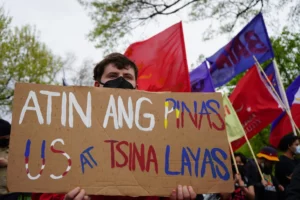
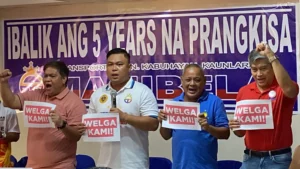
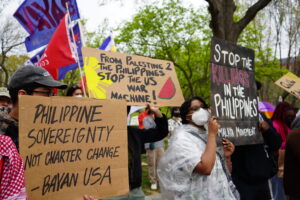
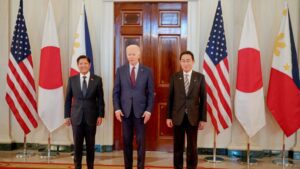
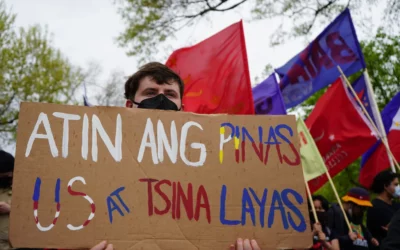
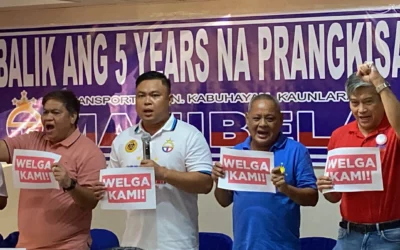
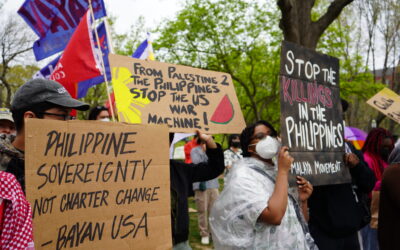
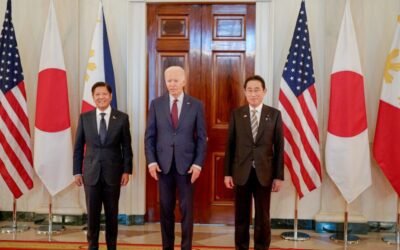
0 Comments